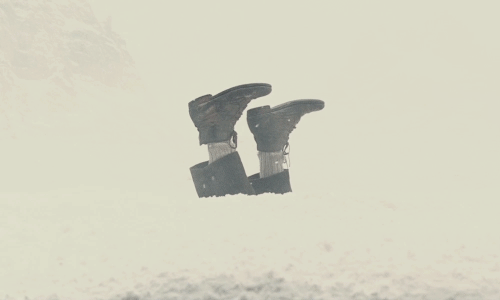What the Fed Just Told Us About the Midwest's Winter
"Activity in the energy sector remained brisk." But not as brisk as the weather!
Along with its updates on interest rates, quantitative easing, and inflation the Federal Reserve publishes The Beige Book - which is perhaps the most arbitrary and most genuinely useful document it produces. It tells us how we're all feeling about the economy on Main Street, without the shroud of mystery that usually comes from central bankers.
The big story from this month's Beige Book is the news that everybody already knows: This winter has been terrible in the US. We get a smattering of new and original ways of stating this, starting with "unusually severe winter," "severe winter weather," "unusually cold weather," "extreme winter weather," "severe weather conditions," and even "unusually severe winter weather conditions." If you see a theme emerging, you'd be right. It's cold and it's affected the business climate.

The news for the Minneapolis district, which covers Minnesota; Montana; the Dakotas; as well as parts of Wisconsin and Michigan, was relatively positive. Consumer spending rose moderately, along with activity in real estate, construction, manufacturing, and energy. Here's a sampling of news from Minnesota:
"A mall manager in Minnesota noted that apparel retailers reported an increase in resort wear sales and that restaurants and bars were busy."
"A car dealership in Minnesota noted that mechanics were working overtime to meet demand for repairs in large part due to cold, wintry weather."
"A Minnesota ski resort reported that cold weather slowed ski lift sales on a number of days."
"The retail vacancy rate dropped 50 basis points in the fourth quarter from the third quarter of 2013 in the Minneapolis-St. Paul area."
"January home sales were down 13 percent from the same period a year ago in the Minneapolis area; the inventory of homes for sale was down 11 percent, while the median sale price rose 12 percent."
"A judge’s decision opened the doors for approval of a $250 million solar power development in Minnesota."
"A home improvement retailer announced plans to hire about 1,000 workers in the Minneapolis-St. Paul area to fill spring positions. A workforce center in western Minnesota noted strong demand for welders and health care workers, such as certified nursing assistants. In contrast, a Minnesota-based retailer announced plans to lay off 400 to 500 employees, while another Minnesota company will lay off more than 180 employees in its legal publishing division. A printing plant in Minnesota will close, laying off 170 workers."
Okay, the absurdity of the Beige Book is too much to overlook. The Federal Reserve is publishing what "a mall manager in Minnesota" is hearing from other people, without naming them and seemingly without fact-checking them? A little strange, but once you get past that bit, the report tells us quite a bit about the economy. The weather has had a major impact on consumers' spending habits. More of them are taking vacations away from the cold, hellish landscape of northern Minnesota. Cars are breaking down because it's so cold.
The real estate market has ridded itself of the extra inventory it accumulated over the recession. Now fewer homes are being sold (since foreclosed homes are mostly off the market) and prices are going up. That's great news for anyone who's underwater on their mortgage.
Jobs growth is a mixed bag. As noted in the Book, Target is laying off a few hundred employees in Minneapolis (and not filling several hundred more open vacancies). Other areas are growing, however. The troubling part is that a place like Target is cutting jobs. Evidently, all is not well in the world consumer spending and that traces back to the labor market. The Beige Books observes that the region's labor market is picking up again, but it's still not healthy. It will be interesting to see how things look once the unusually severe winter abates. For now, the snowstorms may be causing, or maybe just hiding, a slight deceleration of the recovery.